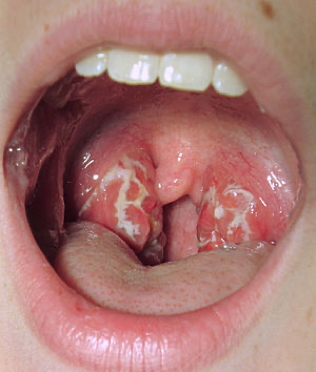Table of Contents
Overview – Acute Tonsillitis
Acute tonsillitis is a common inflammatory condition of the tonsils, frequently presenting with sore throat, fever, and difficulty swallowing. It typically affects children and adolescents and is often associated with pharyngitis. While many cases are viral, Group A Streptococcus (GABHS) remains the most clinically significant bacterial cause due to its potential for complications such as rheumatic fever and peritonsillar abscess. This article outlines key causes, clinical presentation, investigations, management, and complications of acute tonsillitis.
Definition
Acute tonsillitis is defined as acute inflammation of the tonsillar tissues, often accompanied by pharyngitis and systemic symptoms.
Aetiology
Bacterial Causes
- Group A β-haemolytic Streptococcus (GABHS) – most important due to risk of sequelae
- Streptococcus pneumoniae
- Staphylococcus aureus
- Haemophilus influenzae
- Moraxella catarrhalis
Viral Causes
- Most common in children overall, but usually milder
- Epstein–Barr Virus (EBV) – associated with infectious mononucleosis
Clinical Features
Common Age Groups
- Children aged 5–10 years
- Adolescents and young adults aged 15–25 years
Symptoms
- Sudden-onset sore throat and pharyngitis
- Referred ear pain
- Odynophagia (painful swallowing)
- Dysphagia (difficulty swallowing)
- Fever and malaise
- Trismus (jaw muscle spasm limiting mouth opening)
Signs
- Enlarged, erythematous tonsils with or without white exudates or follicular spots
- Tender anterior cervical lymphadenopathy
- Strawberry tongue and diffuse rash (suggests Scarlet Fever from GABHS)
- Palatal petechiae (suggests EBV-related tonsillitis)

Differential Diagnosis
- GABHS pharyngitis (without tonsillar involvement)
- Viral tonsillitis (especially adenovirus or influenza)
- EBV-related infectious mononucleosis
- Peritonsillar abscess (quinsy) – unilateral swelling and uvula deviation
Investigations
First-Line
- Full blood count (FBC): raised white cell count ± lymphocytosis
- Throat swab MCS: particularly if clinical suspicion of GABHS (Centor score)
- ASOT (anti-streptolysin O titre): retrospective indicator of recent strep infection
If EBV Suspected
- Monospot test: detects heterophile antibodies
- Peripheral blood smear: atypical lymphocytes
- EBV serology: for confirmation (VCA-IgM, EBNA)
Management
Supportive Measures
- Rest and adequate oral hydration
- Paracetamol or NSAIDs for fever and pain
- Soft diet if swallowing is painful
Antibiotic Therapy
- Indications: Suspected or confirmed GABHS (Centor score ≥3)
- First-line: Penicillin V or Amoxicillin for 10 days
- Penicillin-allergic: Erythromycin or Azithromycin
- Avoid amoxicillin in suspected EBV → may trigger widespread rash
Complications
Local
- Peritonsillar abscess (quinsy): severe unilateral sore throat, trismus, uvular deviation
- Intra-tonsillar abscess
Post-Streptococcal Sequelae
- Acute glomerulonephritis
- Rheumatic fever → may progress to rheumatic heart disease
- Scarlet fever – associated with erythrogenic toxin-producing strains of GABHS
Summary – Acute Tonsillitis
Acute tonsillitis is an inflammation of the tonsils, often seen in school-aged children and adolescents. It can be viral or bacterial, with GABHS as the most clinically significant pathogen due to the risk of complications like rheumatic fever and peritonsillar abscess. Diagnosis is clinical but can be supported by throat swabs and blood tests. Management includes supportive care and antibiotics when indicated. For related conditions and broader context, visit our Respiratory Overview page.